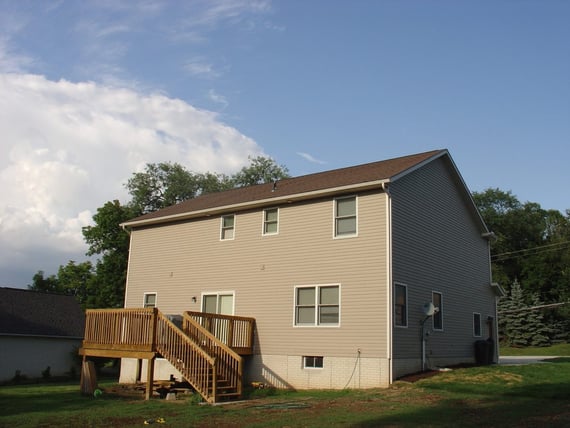When building decking for your investment property, there is a lot to consider. Different materials create different looks and some are more durable than others. Cost is, of course, also a factor. And if your deck is going to be part of a multi-unit property and a shared space, you may want to use a different material than you would for a single family home. Climate and weather conditions also factor into choosing the right decking material. Below, we’ll outline four of the most popular materials, and weigh the pros and cons of each.
Pressure Treated Wood
Pressure treated wood decks are popular because they offer the look and feel of real wood but the treatment of the wood means their lifespan could be longer than that of certain other types of wood decks and maintenance is reduced as well. Different types of woods can be used in pressure treated decking but the process is generally the same. The wood itself is pressurized and treated with chemicals that help prevent rotting and repel termites. It’s also relatively inexpensive at about $3-$6 per square foot. While the maintenance is easy, pressure treated decks are not entirely maintenance free. They do need to be power washed, sanded and re-stained occasionally.
Cedar
Cedar is more expensive than pressure treated wood but is considered to be one of the best woods for decking. As it ages, cedar develops a natural ashy grey hue that many people find quite attractive. Cedar also contains tannins which make it somewhat resistant to rot and decay. However, not all cedar is created equal. Only heartwood cedar should be used for decking, and never sapwood cedar. Heartwood comes from the innermost part of the tree which is much stronger and more durable. Sapwood cedar would simply not stand up to such a high traffic area like a deck, and may not be able to support the weight of what is on the deck. Cedar does require annual refinishing and costs about $9-$11.50 per square foot.
Composite
Composite decking is made up of at least two different materials. Most commonly, wood is used along with LDPE, or low density polyethylene. Composite decking is very low maintenance, highly scratch resistant, and can hold up to extreme weather and very cold climates. It also comes in a wide range of colors, and wood-like grains and finishes are also available. This is a good decking for multi-unit properties as well since it is very low maintenance and can last well over a decade. Cost wise, it runs between $8-$12 per square foot. It is also worth noting that if using green materials is a priority for you, LDPE is often made up of recycled material.
PVC
PVC or vinyl decking has been around for about 20 years but its quality, technology, and range of finishes have all improved in that time. It is extremely durable and low maintenance since it is a completely synthetic material designed to withstand weather, termites, rot, and other elements that would otherwise be harmful to a different deck type. The downside of this decking material is that PVC is not an environmentally friendly material, and a lot of chemicals are used in its composition as well as the production process. Because of its resilience and durability, PVC decking is also expensive, at about $10-$12 per square foot.

Recent Posts
- Spec Home Loans: Complete Guide to Construction Financing for Builders
- Spec Construction Loans: A Spec Line of Credit Is Worth the Paperwork
- Spec Homes and Pre-Sale Homes: Relative Benefits for a Spec Builder
- Spec Construction Success: Insights for the Investor Builder
- How Is a Spec House Different From Other Kinds of House Construction?
